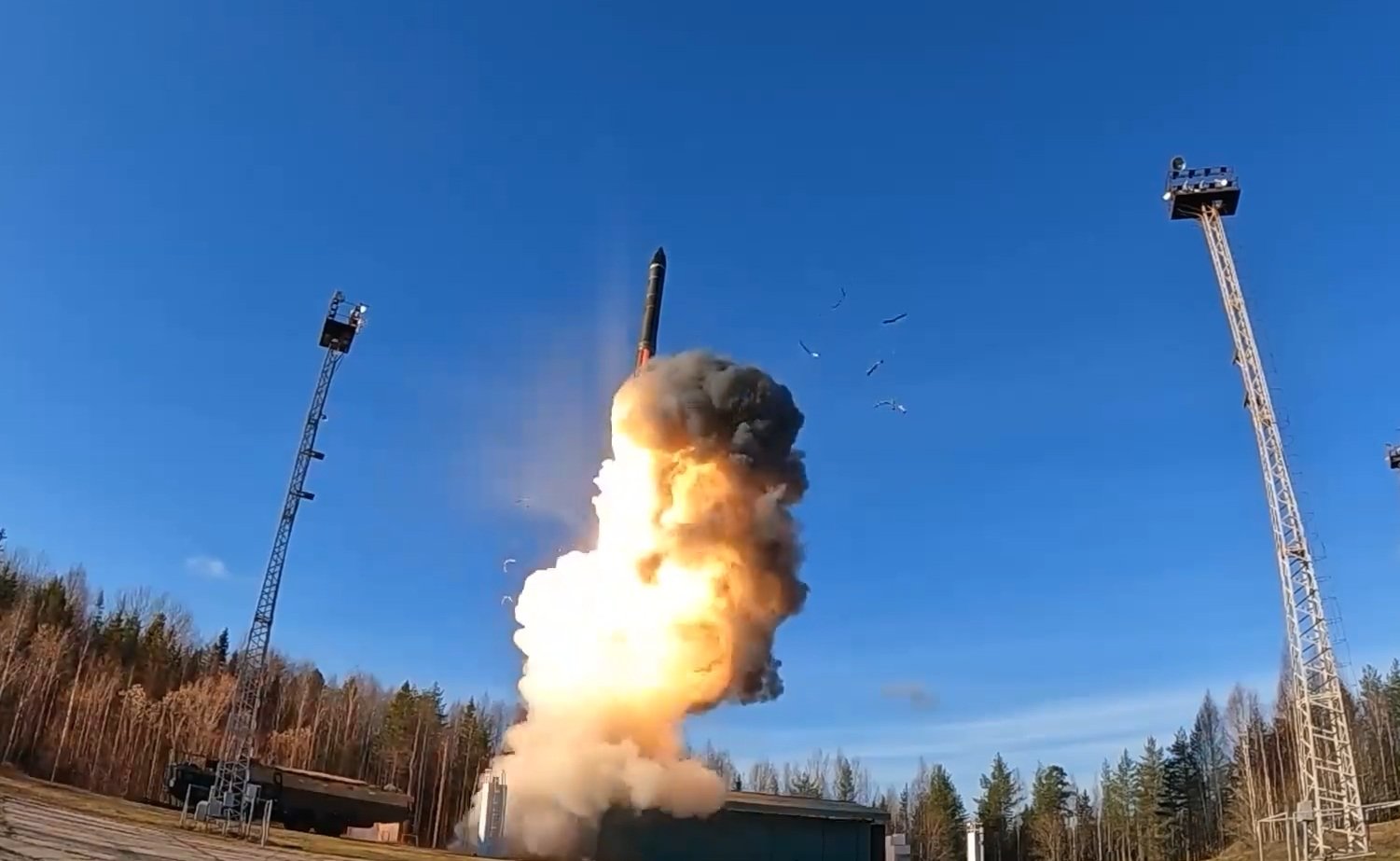
Russia carried out a series of nuclear-capable missile launches on Wednesday as part of a large-scale strategic forces exercise overseen by Vladimir Putin in his role as commander in chief, according to a statement from the Kremlin.
The training involved the launch of multiple intercontinental and cruise missiles designed to test the readiness of Russia’s nuclear triad—its land, sea, and air-based deterrent systems.
According to Russian state media, the exercise included a land-based launch of a Yars intercontinental ballistic missile from the Plesetsk Cosmodrome in the Arkhangelsk region, targeting the Kura test range in Kamchatka. The Yars ICBM is a nuclear-capable weapon designed for long-range strategic strikes and is part of the core of Russia’s ground-based nuclear arsenal.
The Kremlin said the drills also featured the launch of a Sineva ballistic missile from the nuclear-powered submarine Bryansk, which operates within Russia’s Northern Fleet and was positioned in the Barents Sea during the test. Additionally, nuclear-capable air-launched cruise missiles were fired from strategic bombers in Russian airspace.
“The exercise tested the level of preparedness of the military command and the practical skills of the operational personnel in organising the control of subordinate forces,” the Kremlin said in its official statement. “All exercise tasks were completed.”
The statement described the event as part of scheduled strategic deterrence training meant to ensure that command structures and weapons crews can respond rapidly in the event of a nuclear or large-scale strategic threat. Such exercises, held periodically, serve both to validate operational readiness and to demonstrate Russia’s nuclear capability at a time of ongoing tensions with the West.
The Yars missile, a solid-fuel ICBM with an estimated range exceeding 10,000 kilometers, is capable of carrying multiple independently targetable reentry vehicles (MIRVs). The Sineva, used by the Bryansk submarine, is a liquid-fuel submarine-launched ballistic missile (SLBM) designed to carry nuclear warheads across intercontinental distances from underwater platforms.
While the Kremlin described the launches as routine, the timing coincides with heightened geopolitical strain and increased NATO activity along Europe’s eastern flank. Moscow’s announcement came shortly after NATO began its own annual nuclear exercise, Steadfast Noon, earlier this month. That training involves around 60 aircraft from 13 allied nations, including F-35A stealth fighters and U.S. B-52 bombers, and is hosted by Belgium and the Netherlands.
Both NATO and Russian officials have emphasized that their respective nuclear drills are defensive in nature, though the simultaneous exercises underscore the persistent tension between Moscow and the alliance amid the ongoing war in Ukraine and broader East-West confrontation.